The history page of the Towson University Marching Band (TUMB) begins “In 1979, Dr. Marchand, the Towson State Music Department, and the Towson State administration brought Mr. Robert Doster to Towson State to create a marching band.”
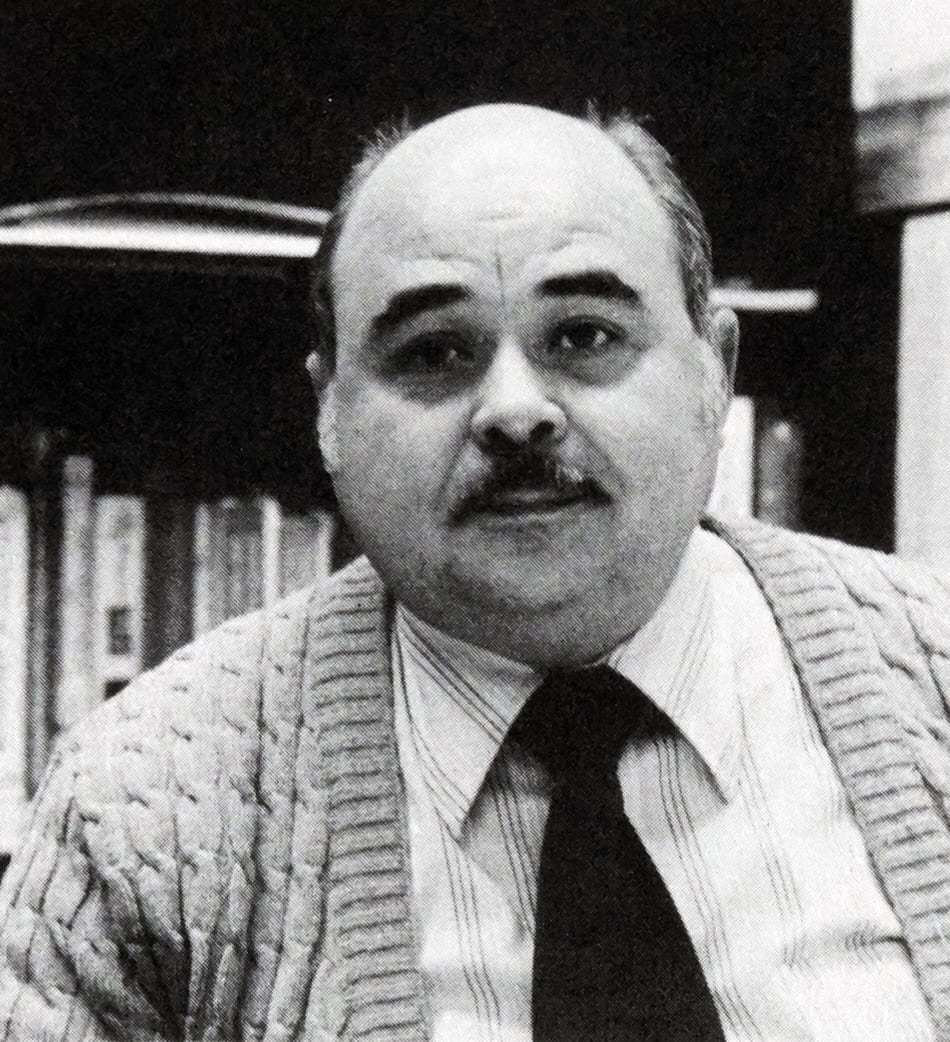
Prior to establishing the band that would become known as TUMB, the school often hired high school bands to play at events like Homecoming. But as Towson transitioned from Towson State College (TSC) to Towson State University (TSU) in 1976, the pressure to offer a wider array of opportunities to students meant interest in a band grew throughout the late-1970s.
Before 1979, students and staff created spontaneous bands to rally around football and men’s basketball games. In 1971, an article in The Towerlight written by student, Jeanne Hartman, invited others to join six students as part of the “College Pep Band under the direction of Mr. Raymond Moore.” Hartman continued “We are highly school spirited and ready to cheer our Tigers on to victory. But we need more people.”
Two years later, staff member Ed Williams led a rather raucous pep band for half-time shows at football games. A 1976 commentary in The Towerlight reminisced that the band:
sloshed its way from Bratwursthaus to Burdick Field, playing and whipping the fans into a frenzied hysteria . . . The highlight of the performance was seeing the band collapse at the end of their final number. Their uniforms included the scruffiest things one could imagine.
As you might guess from that first word, participants were also often pretty drunk. The article goes on to say: “this inebriated condition did not detract from the quality of the music they played. They were good.”
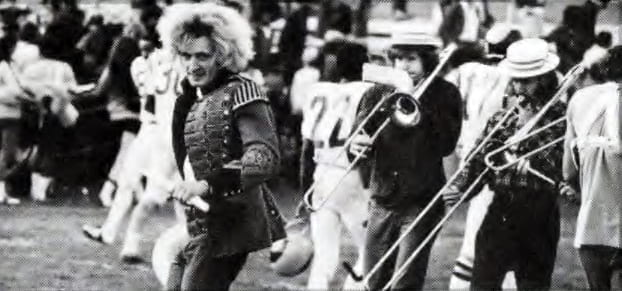
At that point, TSU was already investigating the likelihood of an official band. But there were complications. How would the band be funded and what reward would students who played receive? Would the band play only for football games? What about a pep band?
For the next two years, articles in The Towerlight highlight the difficulties in creating a new marching band.
In February of 1977, The Towerlight published a two sentence notice from the Athletic Department.
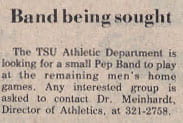
What is interesting about this post is that at the same time that Meinhardt was advocating for musicians to play at games, the Physical Education department faculty vetoed the idea of awarding a physical education credit for participating in a marching band. In October of 1977, The Towerlight reported that in the previous year, “the Student Government Association (SGA) proposed that physical education credit be given members of a marching band. However, the physical education faculty defeated the proposal by a wide margin.”
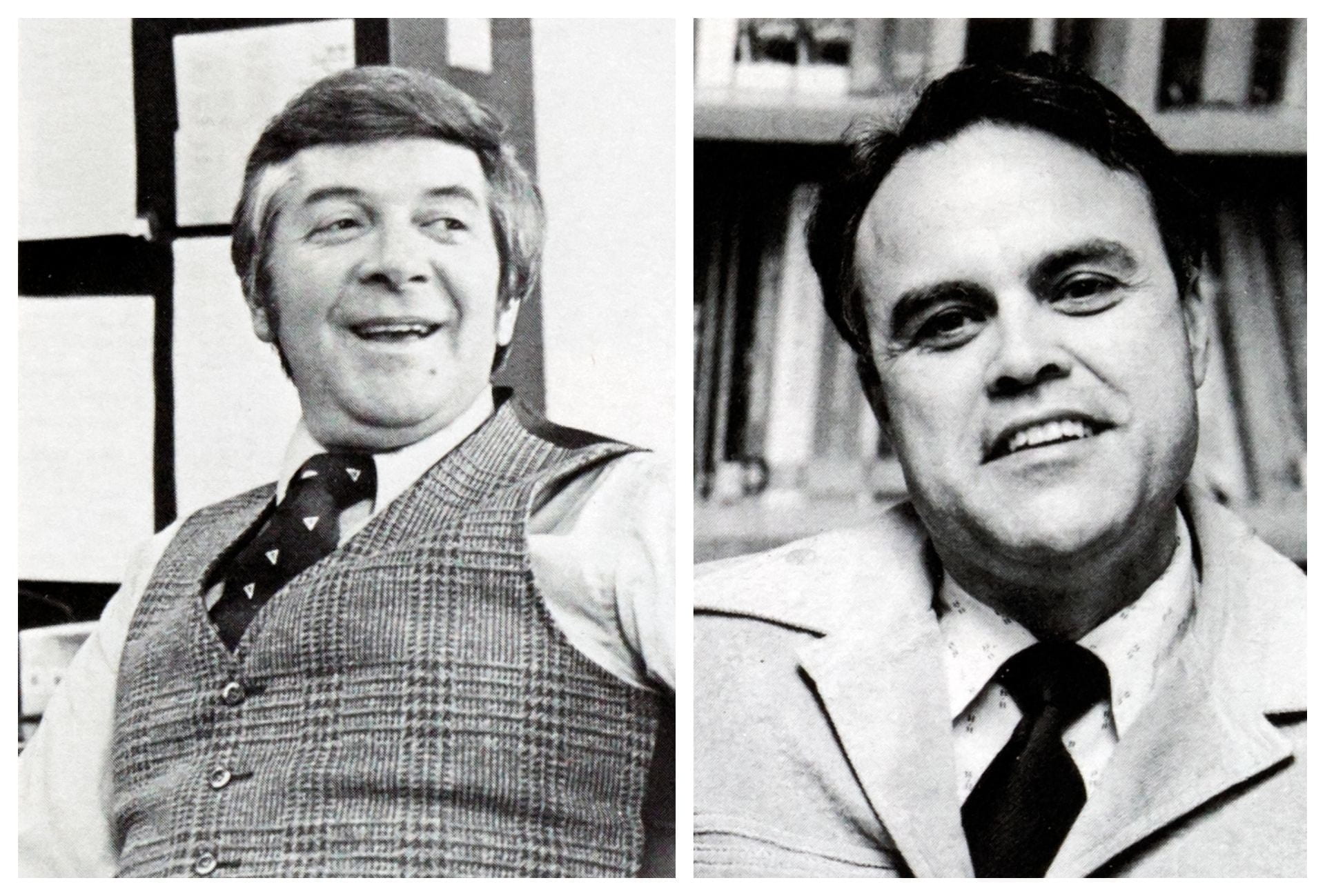
The Music Department also did not want to give credit for participation in a marching band. The chair of the department, Golden Arrington, said in that same article that a band “although entertaining to spectators, is not a valuable music experience. He said that weather warps instruments and a person can only play so well while trying to avoid stepping in holes.” However, he left the option open if the University was willing to offer financial support, specifically “at least $15,000 for uniforms and equipment” – which is almost $65,000 in today’s dollars.
This article spurred replies in the following issue from Music department students who were frustrated by what they saw as a push by “people with a lot of rah-rah enthusiasm but no working knowledge of what marching band is all about.” Bill Hollin took issue with the Physical Education department’s stance that a marching band was not physically taxing.
I challenge any jock to find 90 minutes of military-style marching a cakewalk. This is not to mention the agonizing eight-hour day in oppressive summer heat necessary for training new students and transfers
Hollin also suggested that a pep band would be more “reasonable” given the small size of the crowds at football games.
His final point was that the amount Arrington offered as the cost it would take to start a band was too low and would cover only the uniforms, and didn’t include “the overwhelming cost of music, copying rights, pre-packaged shows, and a salaried marching specialist brings the price of a marching band close to $50,000.”
Six months later, Arrington himself would quote that amount in a Towerlight article which reported on how student fees were being directed to “theatre projects, the Art Galleries, Dance and for the marching band”. Which means that by the spring of 1978, TSU was in the process of hiring a marching band director.
This happened after three significant events. In February 1978, Meinhardt wrote a letter to the Towerlight editors asking why there was no band at athletic events, including men’s basketball games: “Towson has one of the finest facilities in this part of the country, the Towson Center, one of the toughest schedules in it divisions, and one of the top teams.” But he says that attendance is abysmal which makes it hard for the players morale. “It is hard to conceive that there are no musicians in our university of 9,000 students who could play together and fire up the crowd with the spirit it lacks — I await their call!”
Another Towerlight issue included an article about the SGA election that spring. One of the candidates declared that one of his goals would be to create a pep band. John Shehan, who would ultimately win election that year, said, “You don’t get a pep band by running ads in the paper or writing letters . . . You get a pep band by going out and getting people.”
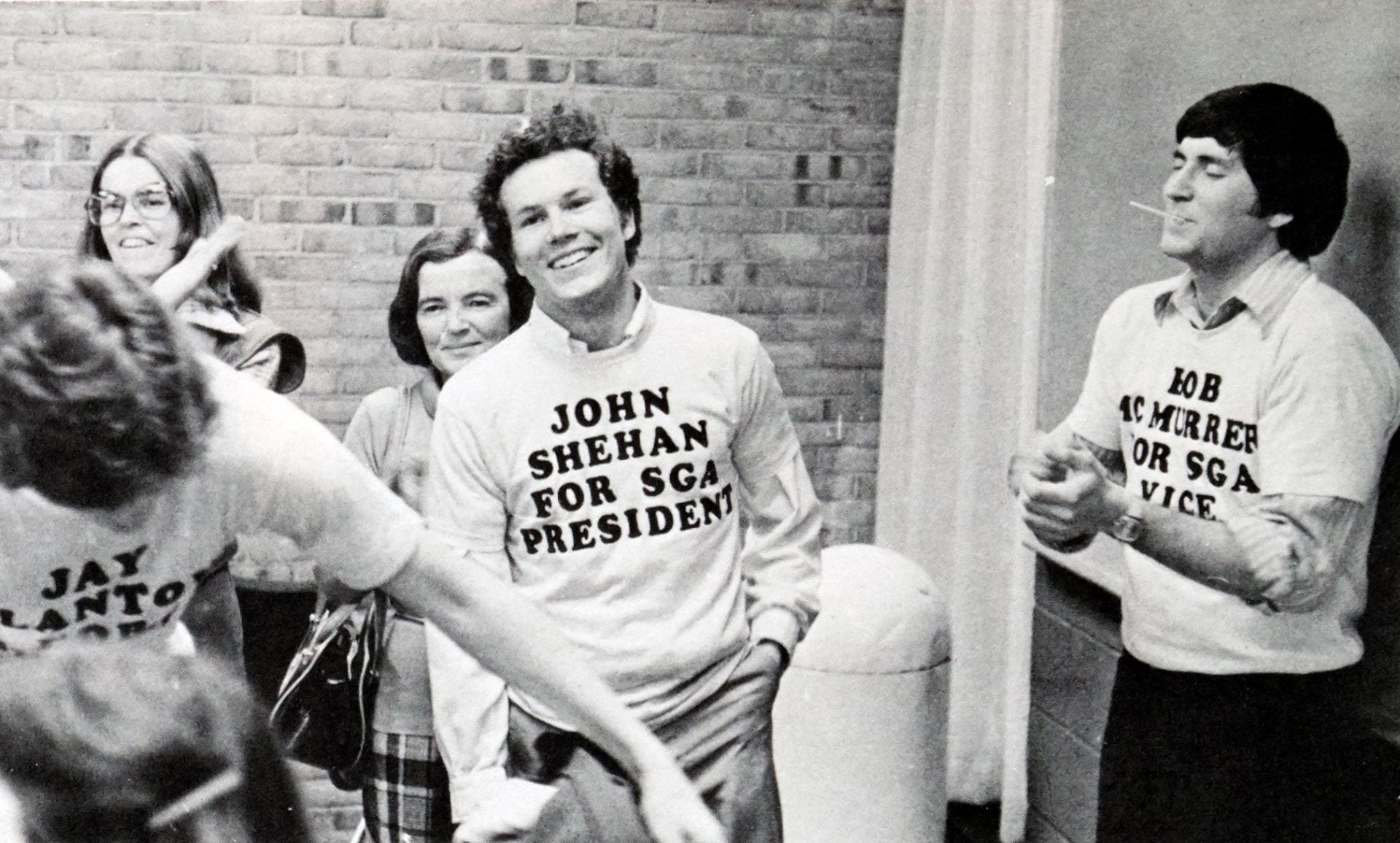
And, ultimately, the push for a marching band might have been made more urgent by the transition of the football program from National Collegiate Athletic Association (NCAA) Division III to Division II in 1979.
Which brings us back to where we started this story: the arrival of Robert Doster on campus, and the start of the band itself — even if that start wouldn’t see a marching band on the field for another year.
In October, The Towerlight reported “The musicians will be selected on an audition basis; the drum major and the rifle captain must fill in an application due to their position of leadership . . . The band will field 100 musicians, a 16-member auxiliary unit, and one drum majors. The uniforms cost $150.50 per person and are ordered.”
The new Music department chair, David Marchand, also reiterated that students should not have to use their own instruments while performing in the marching band.
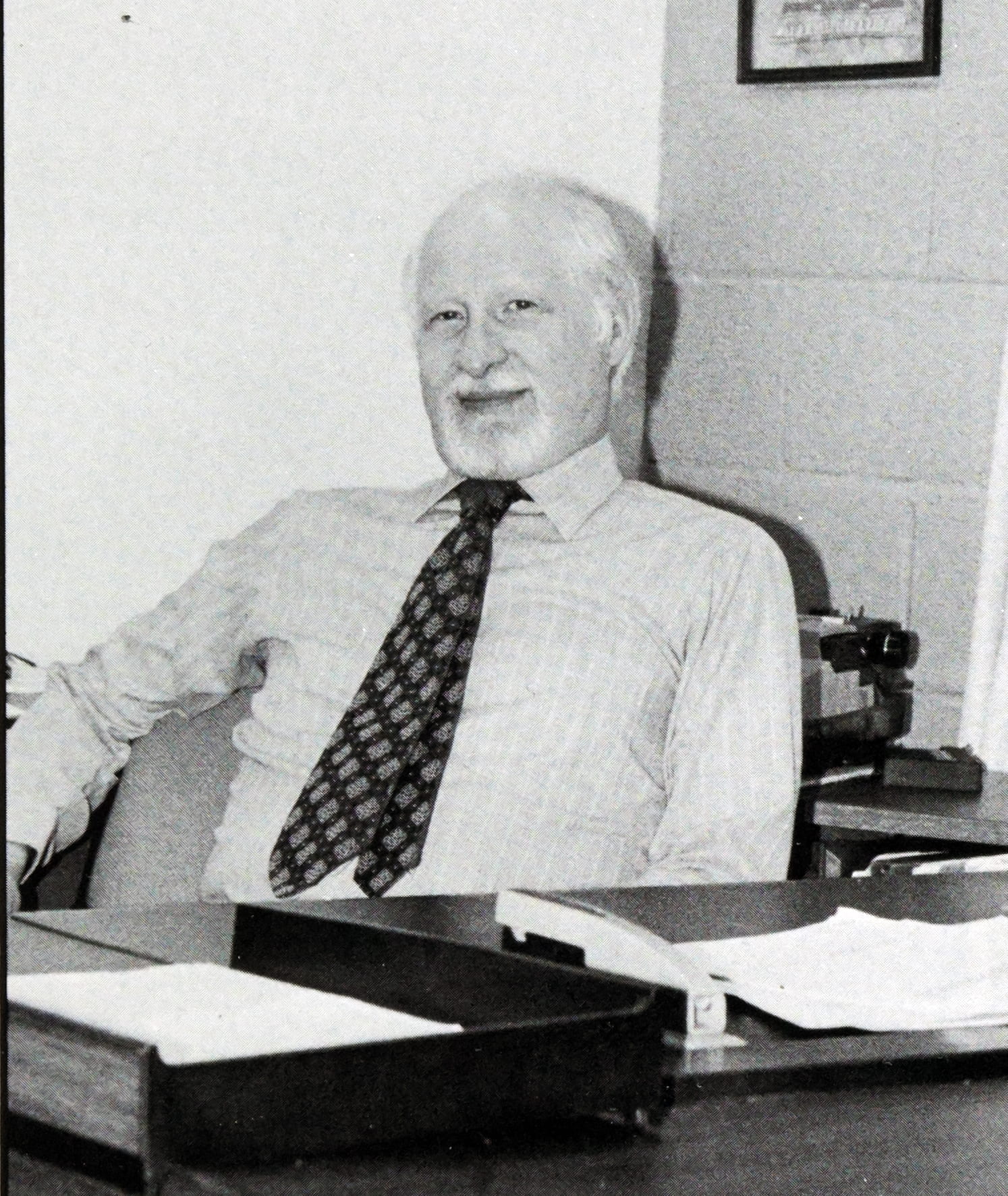
For the next year, advertisements for musicians would show up in The Towerlight, even through the summer of 1980.
Joe McMullen, who was a new Athletic Director that year, said in the summer issue of The Towerlight, “Doster is the band leader. We are not sure if they will march or not.”
And for all of that build-up, it seems a bit of a letdown that the only notation for the first ever performance of the Towson State University marching band on Saturday, September 20, 1980 is a single photo and caption in the following week’s issue of The Towerlight.
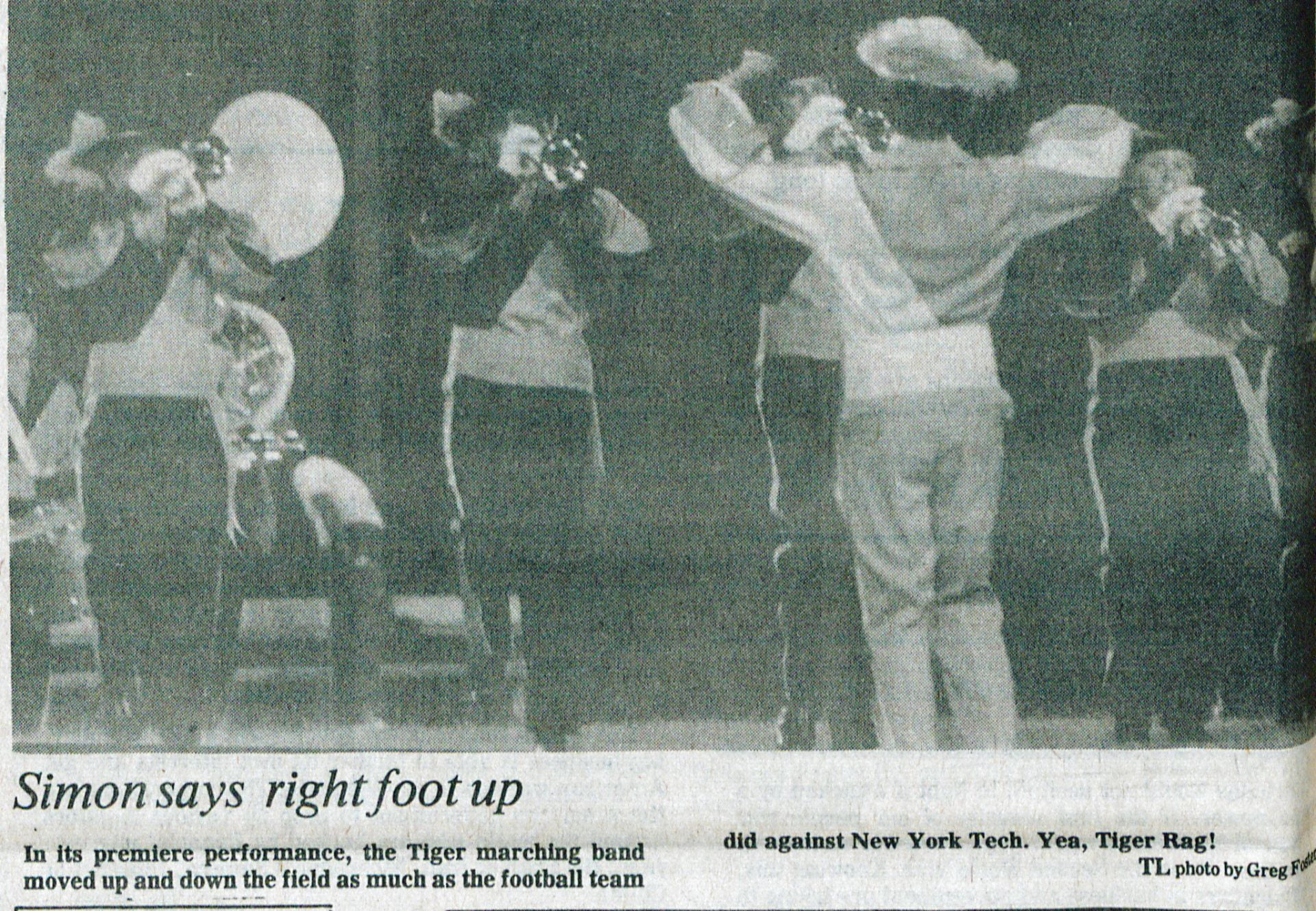
In the forty years since its first appearance, the Towson University Marching Band has become a beloved fixture on TU’s campus and well-regarded beyond our campus borders.
In 2009, TUMB was invited to march in the Macy’s Thanksgiving Day parade, a testament to the work done by Doster’s successors, including its current director, John Miliauskas, who has been with TUMB since 2004.
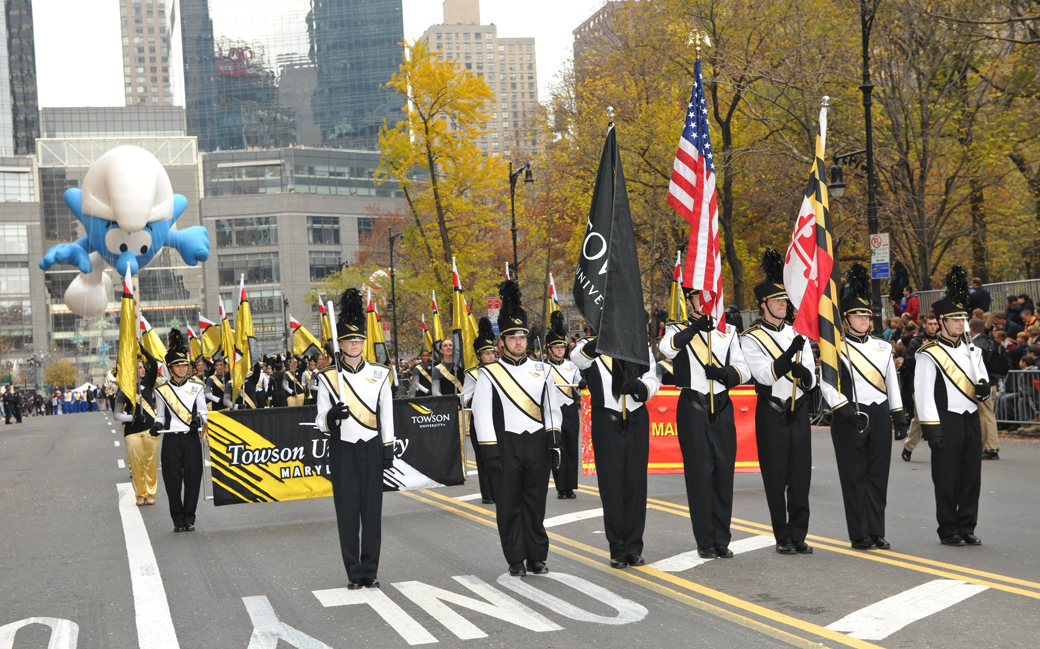
Forty years after its official first appearance on field, we wish to recognize everyone who has made the Towson University Marching Band a reality — from those who envisioned it years ago, to those who we wish we could see on the field today.
Happy official 40th birthday, TUMB!
